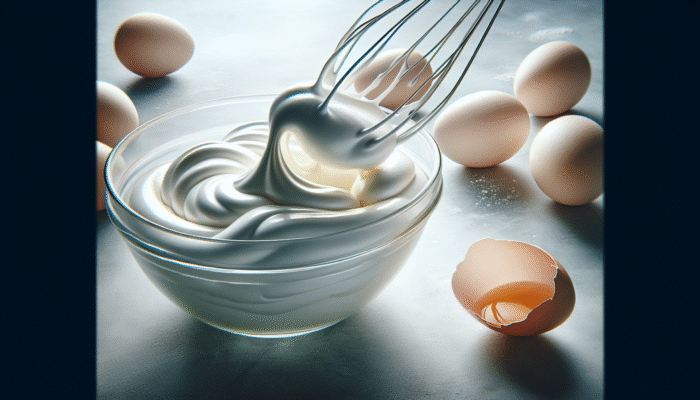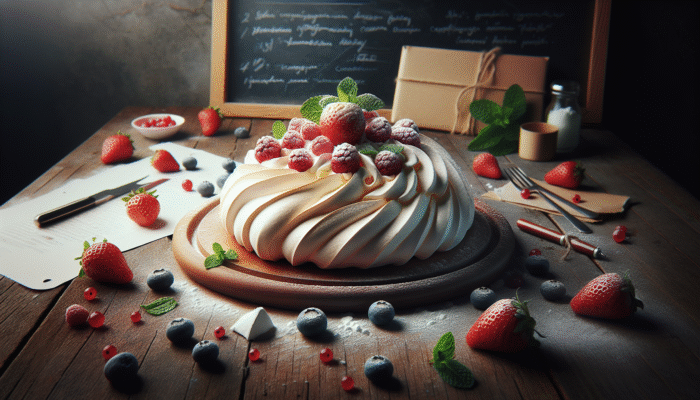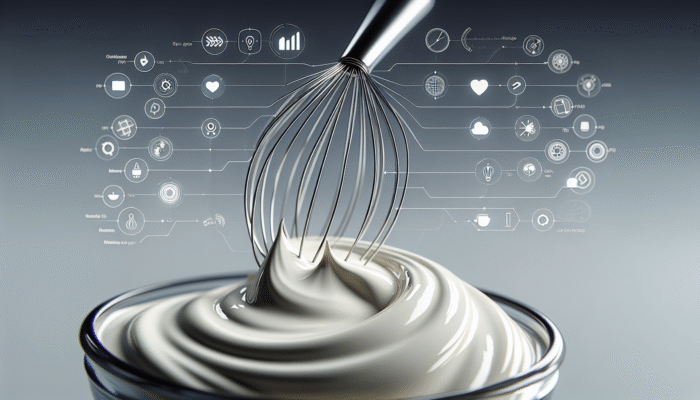Unlocking the Secrets to Crafting an Exquisite Pavlova Experience
Embarking on a culinary adventure to discover the essential techniques for crafting an exquisite pavlova meringue starts with a comprehensive understanding of the fundamental ingredients that are vital to this cherished dessert. The careful selection of each component not only enhances the overall flavour but also ensures a delightful texture that will leave your guests amazed by your baking skills. Every ingredient serves a crucial role, working in harmony to create the traditional pavlova, which is characterised by a crisp outer shell and a soft, marshmallow-like centre. Familiarising yourself with these key ingredients is an indispensable step in your journey to mastering this time-honoured dessert.
Exploring the Vital Role of Egg Whites in Achieving Meringue Perfection

The foundation of any successful meringue is unequivocally the egg whites. To achieve maximum volume and stability, it is essential to utilise fresh, room-temperature egg whites. Fresh eggs have a stronger protein structure, enabling the whites to whip to a greater volume and maintain their shape more effectively than older eggs. By allowing egg whites to come to room temperature, you facilitate easier whipping, resulting in a light and airy mixture that is critical for the success of your pavlova. This understanding of the role egg whites play is one of the essential techniques for crafting an exquisite pavlova meringue.
For optimal results with your egg whites, precise separation is of utmost importance. It is vital to prevent any yolk contamination, as even a minuscule trace of fat can hinder the whipping process. Using a glass or metal bowl is advisable for this task, as plastic bowls often retain oils that can disrupt the aeration process. Once your egg whites are prepared, begin whipping them at a low speed, gradually increasing to medium until soft peaks form. This careful approach allows for the smooth incorporation of air, paving the way for your essential techniques for crafting an exquisite pavlova meringue.
Selecting the Ideal Sugar for Achieving a Perfect Meringue Texture
The sugar you choose carries equal importance to that of the egg whites. Fine caster sugar is the preferred option, as it dissolves more readily during the beating process, ensuring a smooth and consistent texture throughout your meringue. Gradually adding the sugar to the whipped whites, allowing each addition to dissolve completely before adding more, is a critical step; overlooking this can lead to a grainy meringue that lacks the silky finish essential for a pavlova. It is this attention to detail that forms a cornerstone of your essential techniques for crafting an exquisite pavlova meringue.
The balance of sweetness is crucial—not only does sugar impart sweetness, but it also plays a significant role in the structural integrity of the meringue. It aids in stabilising the whipped egg whites, ensuring they retain their shape during the baking process. Aim for a sugar-to-egg white ratio of approximately two parts sugar to one part egg white for an optimal mixture, although this may vary depending on the size of your eggs. This careful consideration in sugar selection and incorporation is an essential aspect of the essential techniques for crafting an exquisite pavlova meringue.
Incorporating an Acidic Element to Enhance Meringue Stability
Adding a splash of acid, such as vinegar or lemon juice, is an astute strategy for achieving your meringue goals. This ingredient serves to stabilise the egg whites, ensuring they maintain their volume and structure even after baking. The acidity from vinegar or lemon juice also introduces a subtle tang to the meringue, enriching its overall flavour profile and complexity. This small yet significant addition is another vital element in the essential techniques for crafting an exquisite pavlova meringue.
When incorporating your acidic component, only a small quantity is necessary—approximately a teaspoon for the eggs from three to four large eggs should suffice. This seemingly minor addition can have a profound impact on the ultimate outcome of your pavlova. It represents a straightforward yet effective tip in the realm of essential techniques for crafting an exquisite pavlova meringue.
Boosting Meringue Stability with Cornflour

Cornflour, commonly known as cornstarch, is a crucial addition to your pavlova mixture. By incorporating just a small amount, you enhance the stability and structure of your meringue, ensuring a crisp outer shell while maintaining a soft and chewy interior. This unique texture is what sets a pavlova apart from other meringue-based desserts, making it a truly distinctive treat. The incorporation of cornflour is an essential technique that cannot be overlooked in your quest for the perfect pavlova.
To integrate cornflour into your meringue, gently fold it into the mixture just before baking. This technique preserves the lightness of the egg whites while providing vital structural support. It’s a simple addition that can have a significant impact on your final product, bringing you closer to mastering the essential techniques for crafting an exquisite pavlova meringue.
Honing Your Preparation Skills for Pavlova Mastery
Once you have gathered your ingredients, the next crucial phase in your pavlova creation is the preparation. Refining the techniques involved in crafting a successful meringue will distinguish you as a truly skilled baker. With meticulous attention to detail, you can guarantee that your pavlova achieves the perfect texture and stability, resulting in an unforgettable dessert experience that will undoubtedly impress your guests and elevate your reputation as a baker.
Ensuring Immaculate Equipment for Flawless Meringue Creation
The cleanliness of your equipment is paramount for producing flawless meringue. Your mixing bowl and whisk must be entirely clean and dry, as any residual fat or grease can disrupt the aeration of the egg whites. It’s advisable to avoid plastic bowls, which may harbour oils detrimental to the outcome. Instead, opt for glass or metal to maintain the purity of your mixture and achieve the best results.
Before you begin, consider giving your bowl a quick wipe with a lemon wedge or a paper towel soaked in vinegar. This simple step can help eliminate any lingering oils and prepare your bowl for the task ahead. With your bowl and whisk primed for action, you can confidently embark on the journey of perfecting your pavlova, fully equipped with the knowledge of one of the essential key techniques for crafting an exquisite pavlova meringue.
Mastering the Beating Process for Optimal Egg Whites

When it comes to beating your egg whites, patience and precision are crucial. Start at a low speed to allow air to gently integrate into the whites. This gradual approach prevents splattering and lays a stable foundation for your meringue. As soft peaks begin to form, you can progressively increase the speed to high for optimal results.
Continue beating until the whites reach stiff peaks, which should stand tall and retain their shape when the whisk is lifted. This process may take several minutes, so it’s important not to rush; allow the egg whites to develop their full potential. Remember, achieving the right consistency is one of the core key techniques for crafting an exquisite pavlova meringue.
Maintaining Optimal Temperature Control for Baking Success
Baking is as much about precision as it is about creativity. A low baking temperature is critical for the success of pavlova, allowing the meringue to dry out gradually without cracking. Set your oven to approximately 100°C (212°F) and ensure it is fully preheated before placing your pavlova inside. This guarantees an even cooking process throughout, which is crucial for achieving that perfect finish and texture.
Be aware of your oven’s unique characteristics; if it tends to run hot, you may need to adjust your temperature slightly lower. Keeping the door closed during baking is essential for preserving temperature stability, as opening the oven can introduce sudden fluctuations that may lead to cracks. Perfecting your baking technique is yet another of the key techniques for crafting an exquisite pavlova meringue that will enhance your dessert-making prowess.
Selecting Top-Quality Ingredients for Meringue Success
Choosing high-quality ingredients is fundamental to the success of your meringue. Always opt for fresh, room-temperature eggs, as they will whip up the best. The same applies to sugar—fine caster sugar is ideal for achieving that silky-smooth texture essential for pavlova. The quality of these ingredients directly influences the end result, making it paramount to choose wisely.
Additionally, consider investing in high-quality vinegar or fresh lemons for your acidic component. These ingredients not only improve the stability of your meringue but also enrich the overall flavour profile, adding depth to your dessert. When it comes to pavlova, every detail matters, and using premium ingredients is one of the essential key techniques for crafting an exquisite pavlova meringue.
Allowing Resting Time for Optimal Meringue Development
Prior to baking, allow your piped meringues to rest at room temperature for approximately 30 minutes. This often-overlooked step is crucial for developing a skin on the meringue. The skin creates a barrier that helps prevent cracking during the baking process, ensuring that your pavlova retains its stunning shape and texture.
During this resting period, the outer layer of the meringue begins to dry out, preparing it for the gentle heat of the oven. This simple yet effective technique is an invaluable part of the key techniques for crafting an exquisite pavlova meringue, guaranteeing an impressive final product that will leave anyone fortunate enough to indulge in a slice in awe.
Shaping Your Meringue for Maximum Aesthetic Appeal
As you delve deeper into the art of pavlova, the shaping of your meringue becomes a vital step. The way you pipe and form your meringue not only influences the aesthetics of your dessert but also affects its texture and stability. A beautifully shaped pavlova can elevate your dining experience, transforming a simple dessert into a stunning centrepiece that captures attention and admiration from all who see it.
Employing Effective Piping Techniques for Stunning Presentation
The piping technique you utilise when shaping your meringue is crucial for the final presentation of your dessert. Begin with a piping bag fitted with a large round tip to create a clean base. Pipe a circle onto your baking paper to serve as a guide for your meringue’s shape, ensuring precision in your design.
As you pipe the meringue, apply gentle pressure and move in a circular motion, building up the sides to achieve a well-defined shape. Keep in mind that the height of your pavlova will impact the cooking time, so aim for a reasonably uniform height. With practice, you will discover that your piping skills can significantly contribute to mastering the key techniques for crafting an exquisite pavlova meringue.
Smoothing the Surface for a Professional Finish
After piping, gently smooth the top of your meringue with a spatula or the back of a spoon. This step is essential for achieving an even bake and a professional appearance. An even surface not only enhances visual appeal but also ensures that the meringue cooks uniformly, preventing any undercooked areas that could detract from the overall quality.
While aiming for a smooth surface, don’t hesitate to create a few decorative swirls or peaks. These details will caramelise beautifully during baking, adding character and charm to your pavlova’s look. Treat this shaping process as an opportunity for artistic expression and a vital aspect of the key techniques for crafting an exquisite pavlova meringue.
Creating a Well for Delicious Toppings
To enhance your pavlova’s ability to hold toppings, form a well in the centre of your piped meringue. Utilise the back of a spoon or your finger to create a slight indentation, ensuring it is deep enough to accommodate a generous amount of whipped cream and fruit without overflowing. This well is not only functional—it also adds an appealing visual element to your pavlova, inviting your guests to indulge in its delightful offerings.
By meticulously crafting this detail, you’re incorporating yet another of the key techniques for crafting an exquisite pavlova meringue that will set your creation apart from the rest, making it a standout dessert at any gathering.
Achieving Baking Perfection for Your Pavlova
As your beautifully shaped meringue awaits its turn in the oven, the next critical phase involves baking. The baking process can either make or break your pavlova, so understanding the nuances of your oven and how to manage it is crucial for revealing the key techniques for crafting an exquisite pavlova meringue.
The Significance of Thoroughly Preheating Your Oven
Never underestimate the importance of a fully preheated oven. Before considering placing your pavlova inside, ensure that the oven has reached the desired temperature. This guarantees that the meringue begins cooking evenly from the moment it enters, laying the groundwork for the perfect dessert and ensuring consistent results.
A well-preheated oven allows the exterior to develop a crisp crust while the interior remains soft and chewy. If your oven tends to run cold or hot, consider investing in an oven thermometer to ensure accuracy. Mastering this aspect of baking is one of the profound key techniques for crafting an exquisite pavlova meringue that everyone should become familiar with.
Implementing an Effective Cooling Process
Once the baking process is complete, resist the urge to open the oven door immediately. Instead, turn off the heat and allow the pavlova to cool inside. This gradual cooling method helps prevent any sudden temperature changes that could lead to cracks and imperfections in your meringue.
Allow the pavlova to rest in the oven for at least an hour or until it has completely cooled. This technique ensures that your pavlova retains its stunning shape and texture, solidifying your reputation as a true master of the key techniques for crafting an exquisite pavlova meringue.
Evaluating Doneness for a Perfectly Baked Meringue
How can you ascertain when your pavlova is ready? A perfectly baked meringue should feel crisp on the outside while remaining slightly soft on the inside. Gently lift it off the baking tray; it should come away easily without sticking. If your meringue feels overly soft or sticky, it likely requires additional time in the oven to achieve the desired texture.
Once you have mastered this judgment call, you’ll find it becomes second nature. Each pavlova will stand as a testament to your understanding of the key techniques for crafting an exquisite pavlova meringue, showcasing your skills and impressing anyone fortunate enough to taste your creation.
Artfully Topping and Presenting Your Pavlova
The final act in your pavlova creation involves the toppings and presentation. This is where you can fully unleash your creative spirit, transforming your pavlova into an exquisite masterpiece. The right toppings not only enhance the flavours but also elevate the overall visual appeal, making it a true showstopper at any gathering or celebration.
Incorporating Whipped Cream for a Luxurious Finish
What would a pavlova be without a generous layer of whipped cream? Begin by whipping fresh cream to soft peaks, ensuring it is not overbeaten—otherwise, you risk turning it into butter. The cream contributes a rich, creamy layer that beautifully complements the lightness of the meringue, creating a harmonious dessert experience.
Spread the whipped cream generously over the cooled meringue, allowing it to nestle into the well you created earlier. This step is where you can truly explore different textures; utilise a spatula to create peaks or swirls for added dimension, enhancing the overall presentation. Your choice of cream is pivotal, with options such as vanilla-infused or even coconut cream for a tropical flair that excites the palate.
Utilising Fresh Fruits for a Burst of Vibrant Flavours
Fresh fruits serve as the crowning jewels of your pavlova. Select a vibrant mix of seasonal fruits to create a stunning contrast in both colour and flavour. Berries, kiwi, and passionfruit are popular choices that not only enhance visual appeal but also provide a delightful burst of sweetness and tang that beautifully complements the meringue and cream.
Artfully arrange your fruits on top of the whipped cream, allowing them to cascade over the edges for an inviting presentation. The interplay of flavours—sweet, tart, and creamy—creates a harmonious experience for the palate, rendering your pavlova truly unforgettable. This careful selection and arrangement of toppings is an essential aspect of the key techniques for crafting an exquisite pavlova meringue.
Adding Finishing Touches for Enhanced Elegance
After adorning your pavlova with cream and fruits, consider adding a few finishing touches to elevate its elegance. Edible flowers can introduce a whimsical touch and vibrant colour, transforming your dessert into a work of art that dazzles the eyes. A light dusting of icing sugar provides a beautiful contrast and a hint of sweetness that enhances the overall look and appeal.
For an additional touch of luxury, consider drizzling some passionfruit pulp or a fruit coulis over the top. These garnishes not only enrich the visual appeal but also contribute additional layers of flavour, creating a multi-dimensional dessert experience. The final presentation of your pavlova can make all the difference, showcasing your skills and understanding of the key techniques for crafting an exquisite pavlova meringue.
Troubleshooting Common Pavlova Challenges for Successful Outcomes
Even the most experienced bakers encounter challenges when it comes to creating pavlova. Understanding how to troubleshoot common issues will assist you in refining your technique and ensuring that each pavlova you produce is a resounding success, standing as a testament to your baking prowess.
Preventing Cracking in Your Pavlova: Effective Strategies
Cracking is perhaps the most prevalent issue encountered when baking pavlova. To avoid this unsightly problem, it is essential to steer clear of sudden temperature changes during baking. Maintaining a steady, low temperature allows the meringue to dry out evenly, significantly reducing the likelihood of cracks forming. This crucial approach is one of the key techniques for crafting an exquisite pavlova meringue.
Additionally, ensuring that your sugar dissolves completely during the mixing phase can enhance the structural integrity of your meringue. Any undissolved sugar can lead to weak spots, which may ultimately result in cracking. By taking these precautions, you can greatly diminish the chances of dealing with cracks in your pavlova, thus mastering one of the vital key techniques for crafting an exquisite pavlova meringue.
Addressing Weeping in Your Meringue for Enhanced Stability
Weeping occurs when moisture seeps from the meringue, creating a soggy mess beneath your cream and fruit toppings. To combat this issue, pay close attention to the ratio of sugar to egg whites. Achieving the ideal balance is crucial for ensuring that your meringue remains stable and can withstand the weight of toppings.
Baking at a low temperature also plays a significant role in preventing weeping. A gentle drying process allows the meringue to set properly without releasing excess moisture. If you consistently experience weeping in your pavlovas, adjusting your sugar ratio and baking temperature can lead to a substantial improvement in your results, helping you master the art of key techniques for crafting an exquisite pavlova meringue.
Preventing Deflation of Your Meringue: Essential Recommendations
Experiencing deflation in your meringue can be disheartening, especially after dedicating time and effort to whipping the egg whites to perfection. To avoid this common pitfall, be cautious about how you incorporate the sugar into the egg whites. Overbeating after the sugar has been added can lead to a collapse in structure that undermines your efforts.
Ensure that each addition of sugar is fully dissolved before increasing the speed of your mixer. This simple step forms a crucial part of the key techniques for crafting an exquisite pavlova meringue, ensuring that your pavlova holds its beautiful shape throughout both the baking and serving processes, ultimately delivering an impressive dessert.
Frequently Asked Questions About Perfecting Pavlova
Can I prepare pavlova in advance without compromising its quality?
Yes, pavlova can be made ahead of time. Simply bake and cool it, then store it in an airtight container at room temperature for up to two days prior to serving. Top it with cream and fruit just before serving to maintain freshness and texture, ensuring a delightful experience for your guests.
What can I use as a substitute for caster sugar in my pavlova?
If caster sugar is unavailable, you can use granulated sugar as a substitute. Just ensure to blend it in a food processor to achieve a finer texture that will dissolve better in your meringue mixture, maintaining the desired smoothness and consistency.
Why is my pavlova sticky when I serve it?
A sticky pavlova often indicates that it hasn’t been baked long enough or that the oven temperature was set too high. Ensure to bake at a low temperature and allow ample cooling time to achieve the ideal texture and consistency, resulting in a flawless presentation.
Is it possible to freeze pavlova without affecting its quality?
Pavlova can be frozen, but it’s best to do so without any toppings. Wrap it securely in plastic wrap and store it in the freezer. Thaw it in the fridge before serving for best results and preservation of texture, allowing it to return to its optimal state.
Which fruits are ideal for topping my pavlova?
Seasonal fruits such as berries, kiwi, and passionfruit are excellent choices for pavlova. They add vibrant colours and contrasting flavours that complement the meringue and cream beautifully, enhancing the overall dessert experience and delighting the senses.
What causes my pavlova to collapse unexpectedly?
A collapse can occur if the egg whites were under-whipped or if the sugar wasn’t fully dissolved during mixing. Ensure that your meringue reaches stiff peaks and that sugar is incorporated gradually for the best results and structure, solidifying your pavlova’s success.
How can I prevent my pavlova from cracking during baking?
To prevent cracking, maintain a low baking temperature, avoid sudden temperature fluctuations, and ensure that the sugar is fully dissolved during the mixing process to enhance stability, allowing for a flawless pavlova.
What is the ideal baking temperature for a successful pavlova?
The ideal temperature for baking pavlova is around 100°C (212°F). This low temperature ensures even cooking and helps develop a crisp exterior while maintaining a soft interior, creating the perfect texture that defines a traditional pavlova.
How long should I allow my pavlova to cool after baking?
Allow your pavlova to cool in the oven for at least an hour following baking. This gradual cooling process helps prevent cracking and ensures the desired texture is achieved for a perfect presentation, highlighting your baking expertise.
Is pavlova a gluten-free dessert option?
Yes, pavlova is inherently gluten-free as it is primarily made from egg whites and sugar, making it a delightful option for individuals with gluten sensitivities or dietary restrictions, enabling everyone to enjoy this exquisite dessert.
Join our community on Facebook for more baking tips!
The post Secrets to a Perfect Pavlova Meringue: Master the Art appeared first on Cooking Gods.
The Article Perfect Pavlova Meringue: Master the Secrets to Success Was Found On https://limitsofstrategy.com
The Article Pavlova Meringue Mastery: Unlock the Secrets to Perfection found first on https://electroquench.com

